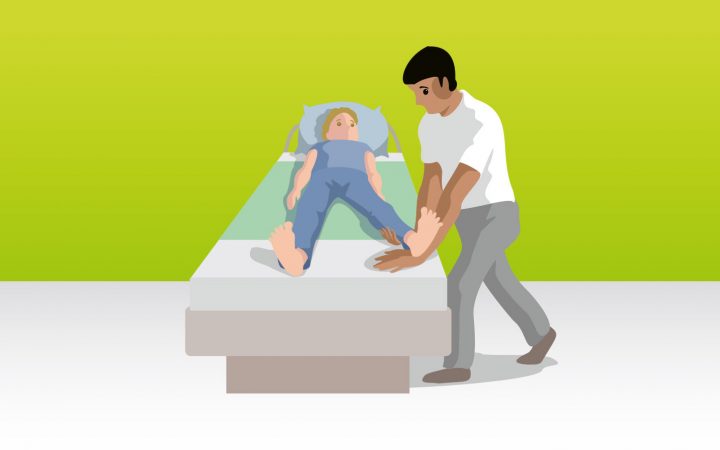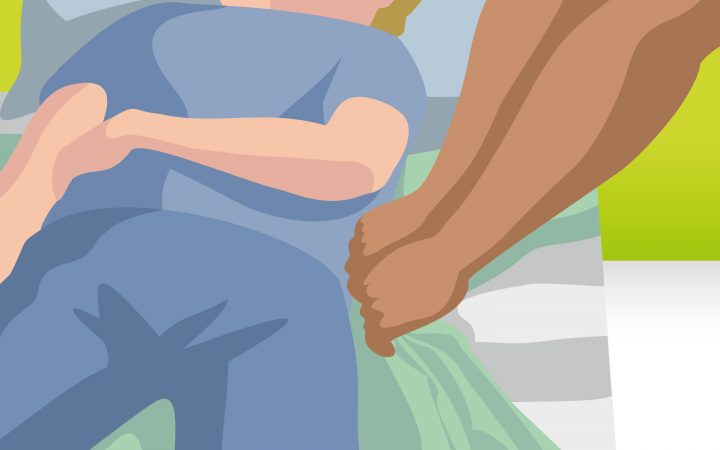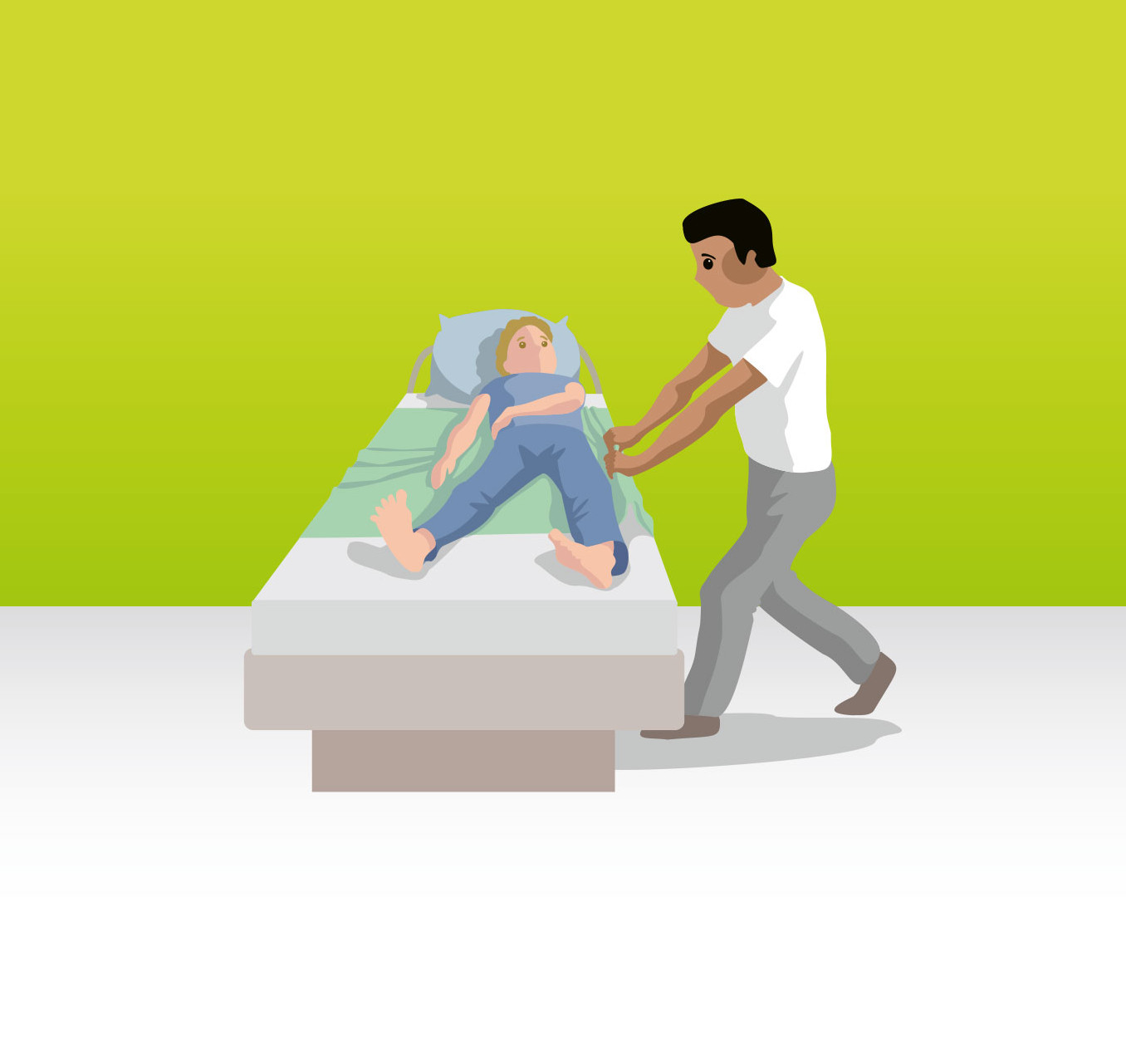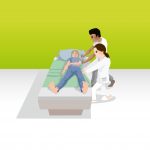Working in the health service is physically very strenuous and dangerous. It can happen that a nursing staff has to lift up to 1.8 tons in one shift. In the USA alone, 35,000 nursing staffs suffer injuries to the musculoskeletal system every year due to excessive strain.
This strain often manifests itself in damage due to overload, such as back and neck problems. These are caused by a combination of poor working postures and movements, incorrect use of aids, patient condition and other working conditions. But these complaints can be avoided or at least reduced by minimizing the risk factors.
In our series ergonomic working we describe how some basic movements from the nursing routine can be carried out so that the burden on the body is reduced to a minimum. Especially the use of tools is especially important. As here for example in the lateral rearrangement of a resident with a sliding sheet:
Preparation of the resident

• The front leg is placed in the direction of the planned rotation to avoid pressure on the resident’s back
Repositioning the resident

• The sliding sheet under the resident is gripped at hip level with both hands
• The nursing staff shifts the body weight to the rear with an offset leg position
• The arms remain straight and the back straight
• The same movement is repeated at shoulder level
Here are all the steps in a video:
Working in the health service is physically very strenuous and dangerous. It can happen that a nursing staff has to lift up to 1.8 tons in one shift. In the USA alone, 35,000 nursing staffs suffer injuries to the
musculoskeletal system every year due to excessive strain.
This strain often manifests itself in damage due to overload, such as back and neck problems. These are caused by a combination of poor working postures and movements, incorrect use of aids, patient condition and other working conditions. But these complaints can be avoided or at least reduced by
minimizing the risk factors.
In our series ergonomic working we describe how some basic movements from the nursing routine can be carried out so that the burden on the body is reduced to a minimum. Especially the use of tools is especially important. As here for example in the lateral rearrangement of a resident with a sliding sheet:
Preparation of the resident
• The front leg is placed in the direction of the planned rotation to avoid pressure on the resident’s back
Repositioning the resident
• The sliding sheet under the resident is gripped at hip level with both hands
• The nursing staff shifts the body weight to the rear with an offset leg position
• The arms remain straight and the back straight
• The same movement is repeated at shoulder level
Here are all the steps in a video:


